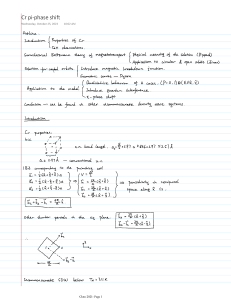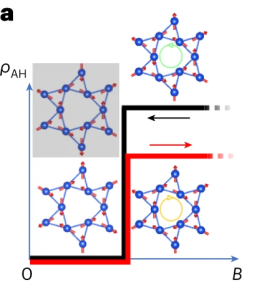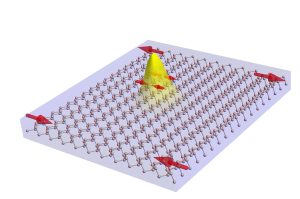When hearing “pi-phase” and “quantum oscillations”, would you immediately jump to Berry phase? In a recent collaborative work, we have shown that a new kind of “pi-phase shift”, i.e., that between quantum oscillations in longitudinal resistivities along orthogonal directions, in the prototypical spin density wave material Cr, is caused by quantum interference effects between coupled …
Category: new papers
Jan 30
Unexpected symmetry in kagome spin ice revealed by electrical transport
Since the original proposal by Anderson on spin liquid being a possible mechanism for high-Tc superconductivity, electrical transport in frustrated quantum spin systems has always been one of the most enticing topics in condensed matter physics. However, a majority of quantum spin ice and spin liquid candidates are good insulators, making it challenging for standard …
Sep 07
Transporting the shape of spin
Spintronics exploits the idea of using electron spin instead of charge to encode and process information. But can electrons carry more than just spin across diverse materials? Our work answers with a resounding yes, unveiling the transport of spin “shape” in solids. The word “shape” means how spin is distributed spatially about the center of …
Jul 22
An alternative to magnetization
In the ordinary Hall effect, it is the magnetic field that tells which way the electric currents driven by a voltage bias should be deflected, simply through the Lorentz force. In a ferromagnetic conductor, it is the direction of the magnetization that determines that of the transverse anomalous Hall current flow, despite the more complicated …
Apr 17
Realization of kagome spin ice in an intermetallic compound
Spin ices are exotic phases of matter characterized by frustrated spins obeying local “ice rules,” in analogy with the electric dipoles in water ice. Namely, on a tetrahedron with one spin or electric dipole moment sitting on each vertex, only the two-in-two-out configurations are allowed. Such a local constraint can lead to a macroscopic number …
Sep 21
Geometric Dynamics of Magnetization: Electronic Contribution
Magnetization dynamics has been routinely studied using the Landau-Lifshitz-Gilbert (LLG) equation. Although the LLG equation has a quantum mechanical origin and reflects the fact that magnetization and angular momentum of electrons are really the same thing, it has been used most of the time as a classical equation. The reason for it is that magnetism …
Sep 21
Electrical switching of the topological anomalous Hall effect in a non-collinear antiferromagnet above room temperature
First discovered by Edwin Hall in 1881, the anomalous Hall effect describes the transverse flow of electric currents under a longitudinal electric field in a ferromagnetic metal with its magnetization perpendicular to the measurement plane. By flipping the magnetization direction of the ferromagnet the transverse current also changes sign. The behavior looks similar to electrons …




Recent Comments